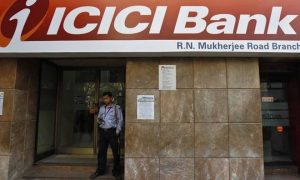PM Fasal Bima Yojana: The PM Fasal Bima Yojana protects farmers against crop loss or damage resulting from unanticipated disasters and is the third biggest insurance policy in the world in terms of premiums.
PM Fasal Bima Yojana: Introduced in 2016, the Pradhan Mantri Fasal Bima Yojana (PMFBY) is an insurance programme designed to guarantee farmers’ crop production for a designated insurance unit at a predetermined level to promote sustainable production in the agriculture sector.
Over Rs 1,55,977 crore in claims have been paid to farmers in the eight years since the scheme’s implementation, after they paid nearly Rs 31,139 crore as a share of their premium.
The PM Fasal Bima Yojana protects farmers against crop loss or damage resulting from unanticipated disasters and is the third biggest insurance policy in the world in terms of premiums.
The Department of Agriculture and Family Welfare oversees the programme and keeps a close eye on its execution, meeting with insurance firms and states as well as conducting weekly video conferences with stakeholders to ensure prompt claim payout.
Read More: Pradhan Mantri Fasal Bima Yojana: How to sign in and register online for PMFBY — Know Details
Here are the key points that you need to know about PM Fasal Bima Yojana—
PM Fasal Bima Yojana: What is PMFBY?
The Pradhan Mantri Fasal Bima Yojana (PMFBY) is an insurance programme designed to guarantee farmers’ crop production for a designated insurance unit at a predetermined level to promote sustainable production in the agriculture sector.
PM Fasal Bima Yojana: Which crops are covered under PMFBY?
PMFBY covers major crops of the specific insurance unit, which include—
a. Food crops (cereals, millets, and pulses)
b. Oilseeds
c. Annual commercial or horticultural crops.
Read More: Have unclaimed deposits in banks? Here’s how you can claim them, as per RBI rules
PM Fasal Bima Yojana: Who can avail of the benefit of PMFBY?
All farmers cultivating the notified crops in the notified areas, including tenant farmers and sharecroppers, are eligible for coverage.
PM Fasal Bima Yojana: Sum Insured or Coverage Limit
The sum insured per hectare for both loanee and non-loanee farmers is the same and equal to the scale of finance as decided by the district-level technical committee or state-level technical committee and would be pre-declared by the state-level coordination committee on crop insurance. No other calculation of the scale of finance will be applicable. The sum insured for each farmer is equal to the scale of finance per hectare multiplied by the area of the notified crop proposed by the farmer for insurance.
In cases where crops are separately notified under the irrigated and un-irrigated categories by state governments, the sum insured for irrigated and un-irrigated areas should be separately indicated.
PM Fasal Bima Yojana: What are the premium rates and premium subsidies for crop insurance?
The rate of insurance charges payable by the farmer will be as per the following table:
Read More: Aadhaar And PAN Card Not Linked Yet? Know How This Can Impact Your TDS
| Season | Crops | Maximum insurance charges payable by the farmer |
| Kharif | All food grains and oilseed crops | 2% of Sum Insured |
| Rabi | All food grains and oilseed crops | 1.5% of Sum Insured |
| Kharif and Rabi | Annual Commercial / Annual Horticultural crops Perennial Horticultural Crops (Pilot Basis) | 5% of Sum Insured |
PM Fasal Bima Yojana: What are the risks covered by the PMFBY scheme?
The scheme’s basic cover protects against yield loss to standing crops (sowing to harvesting). This all-inclusive risk insurance is offered to compensate for yield losses resulting from unavoidable events such as dry spells, flooding, inundation, widespread pest and disease outbreaks, landslides, lightning-caused natural fires, storms, hailstorms, and cyclones.
PM Fasal Bima Yojana: What are the add-on risks covered by the PMFBY scheme?
In addition to the mandatory basic cover, the state governments and UTs may select any or all of the following add-on covers in consultation with the State Level Coordination Committee on Crop Insurance (SLCCCI) to cover the following stages of the crop and risks that could result in crop loss:
- Prevented Sowing/Planting/Germination Risk: Insufficient rainfall or unfavourable seasonal or climatic circumstances prohibit the insured area from sowing, planting, or germination.
- Mid-Season Adversity: Loss in the event of unfavourable weather circumstances, such as floods, protracted dry spells, severe droughts, etc., during the crop season, when the season’s predicted production is probably going to be less than 50 per cent of the typical yield. When such hazards materialise, this add-on coverage makes it easier to provide insured farmers with prompt relief.
- Post-Harvest Losses: Coverage is limited to two weeks following harvesting for crops that need to be dried in a cut-and-spread or small-bundled condition, depending on the needs of the local crop population. This protection is provided in the field against certain hazards, such as hailstorms, cyclones, cyclonic rains, and unseasonal rains.
- Localised Calamities: Damage or loss to insured crops that have been notified of potential hazards from lightning, such as isolated farms in the notified area, that could result in landslides, hailstorms, flooding, cloudbursts, or natural fires.
PM Fasal Bima Yojana: Exclusion in PMFBY
However, the scheme will not cover damages caused by malicious means, preventable risks or losses arising out of war, or nuclear risks.
PM Fasal Bima Yojana: How to Register via the NCIP Portal
Farmers can visit the NCIP portal or click on https://www.aicofindia.com/AICEng/Pages/Links.aspx to access the PMFBY portal and get registered there.



































